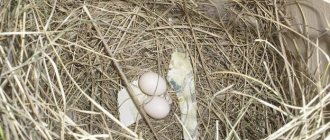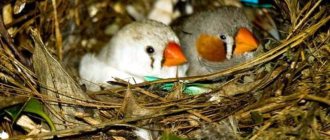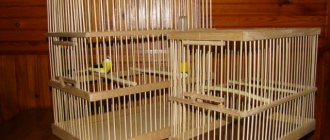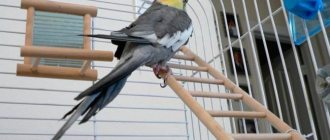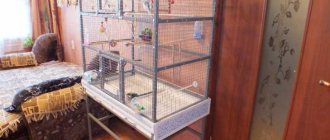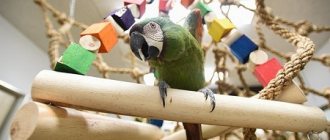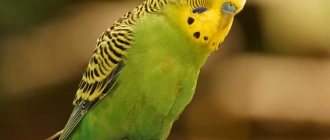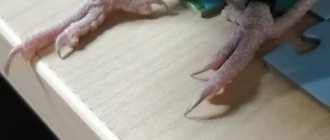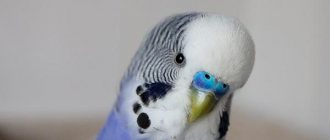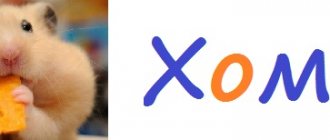A spacious cage for finches will allow birds to lead an active lifestyle without the risk of injury from its bars. Both the shape of the home and the material from which it is made are important. Also, the cage must be fully equipped with everything necessary for the finches to live comfortably. You will learn everything you need to know about choosing a cage for these birds from our article.
Optimal cell sizes
Finches spend most of their lives in a cage - this is safe and convenient for the owner and the birds themselves. Therefore, the home must correspond to the bird's lifestyle. Finches are very mobile creatures; they need a lot of space for normal life.
Birds must be able to fully expand their wings, fly, jump from perch to perch, and do other activities without touching the walls of the cage or its internal equipment. For one pair of finches, a cage of the following sizes is suitable:
- length - sixty to seventy centimeters;
- width - forty to fifty centimeters;
- height - forty to fifty centimeters.
In such a dwelling, same-sex birds will be able to live comfortably, and birds of different sexes will be able to reproduce: the chicks will be able to calmly learn to fly. However, older chicks will need more space. If you plan to breed finches, you can immediately purchase a larger cage or several additional ones for further transplantation of grown chicks.
Ideally, for each nesting pair you need to have a separate cage, so that during this period friendly birds visiting each other do not damage the clutches. A large flock can be kept in a spacious enclosure. Details in the article “Keeping finches at home.”
A small home can cause finches to become obese due to a sedentary lifestyle. In advanced cases, the disease causes the bird’s internal organs to malfunction. If they refuse, the finch will die. Also, any attempt to fly in such a cage may result in limb injuries.
Features of breeding at home
Many breeders are interested not only in keeping these birds, but also in the possibility of producing chicks. Therefore, it is very important to understand finches - reproduction and the conditions that need to be provided for them.
How to make a cage for finches
The question that needs to be sorted out before purchasing pets is which cage is suitable for finches.
When choosing, you should take into account that these birds love activity. They constantly jump from place to place and love to fly. If you deprive them of this opportunity, then over time they will gain excess weight and feel unwell.
The cage must be long
Extra decorative elements in the cage are not needed - they will interfere with flight, and finches may well damage their thin wings due to them. It is enough to place several perches in the corners so that the birds have the opportunity to sit, rest, and take care of their plumage.
Height and width are not too important. The main thing is that the length is sufficient - the longer it is, the better. But, given this requirement and the size of modern apartments, a compromise should be reached. The optimal length will be 60-70 cm, and the height and width of 40-50 cm will be sufficient.
Worth remembering! It is advisable to pour water at room temperature into the finches’ drinking bowl—settled, but not boiled.
You should also take care of the proper “furnishing” of the cage. It must have not only feeders, but also a convenient drinking bowl. It needs to be washed regularly - when drinking, the bird dips its beak into the water, from which particles of fruit and insects fall into it. As a result, harmful bacteria multiply in the drinking bowl, which can become a source of disease. Also, don't forget about the bath. Finches generally love cleanliness and watch every feather. They will be happy to swim in it, especially in hot weather.
What to eat, what fruits you can
A balanced diet is also very important. You need to take into account what finches eat in the wild and try to recreate a similar diet as accurately as possible at home.
Birds need quality food
The basis of the diet is grains. It is better to use special mixtures - they are easy to prepare at home. Optimal feed ratio:
- 1 kg millet;
- 250 g of seeds of field plants (dandelion, clover, plantain);
- 150 g oatmeal;
- 300 g canary seed;
- 100 g each of rapeseed, hemp, lettuce seeds.
But it is important to remember not only what to feed the finches, but also how much. Each bird should be given 1 tsp. stern.
Important! Porridge, fruits and greens cannot be served in the same bowl with dry food - you need to have separate ones.
To make the food balanced, you should also add porridge - rice, buckwheat or millet - boiled in water. To get vitamins, the diet needs to be enriched with herbs - dill and parsley are suitable. From fruits you can give apples and not too sweet pears, as well as ripe apricots and peaches.
During the breeding season and feeding the chicks, live food is needed - mealworms or bloodworms will do. If they are not available, then dried gammarus, sold in all aquarium stores, will do. As a last resort, you can use hard-boiled chicken eggs and low-fat cottage cheese. Without them, optimal feeding for the finch will be incomplete.
Reproduction
To reproduce, a pair of birds must be placed in a separate cage (if they usually live in a flock, in a common one). They must be selected carefully. The male should actively sing, and the female should dig through the garbage and look for material to build a nest. Having provided them with separate housing, you also need to take care of a special diet - feed them protein dishes.
How to make a bird's nest
In general, in many pet stores you can purchase special nests for finches. You need to place one, or better yet, two nests in the cage. This will serve as a signal for the female to lay eggs.
If it is not possible to buy them, you need to place suitable material at the bottom of the cage. Hay, fluff, animal hair, and small twigs are suitable. The female, ready for mating, will immediately begin to build a cozy nest.
Finches in the nest
How long do eggs hatch?
Another important question is how long finches hatch eggs. The procedure lasts about 12 days, but there may also be deviations for a day, both up and down.
On a note! If a pair of finches sit next to each other for a long time, rubbing their beaks and affectionately fingering each other’s feathers, then they will become a good couple.
It will certainly be interesting for novice poultry keepers to watch how finches hatch eggs. They do this in turns, although the female still spends more time in the nest. But she also has the opportunity to stretch her wings and peck at food while her dad takes care of the eggs. This can be called an interesting difference from most birds, in which the eggs are incubated only by the female.
A clutch usually consists of 2-6 eggs (this depends on the age of the female, the correct diet and even heredity). Alas, not all chicks hatch - almost every clutch contains at least one unhatched egg.
What to feed the chicks
With normal behavior, parents are quite capable of taking care of their young on their own. Therefore, the owner does not have a headache about what to feed the chicks of finches. But still, the task of providing a suitable diet falls squarely on his shoulders.
Finches chicks
As mentioned above, it is best to use live food for this (bloodworms, mealworms) or at least a replacement (dried food, cottage cheese, eggs). Children grow very quickly and need a diet containing large amounts of protein. Of course, it is not possible to obtain it in sufficient quantities from plant seeds. Because of this, the number of sick juveniles may increase, and the growth rate will be significantly reduced.
What’s interesting is that at first the chicks are fed only by the female. Over time, the male also joins in. When the juveniles grow up, the female leaves the offspring in the care of the father, and she herself goes about her business - most often preparing for a new laying of eggs.
What cage shape suits finches
When choosing a cage for finches, first of all you need to worry about the comfort of the birds, and only then about its compatibility with the decor of the apartment.
Round, spherical or dome-shaped structures are not suitable for these birds. In them, finches feel unprotected due to the lack of cozy corners in which they like to hide in case of danger or for relaxation.
Cages in the shape of a trapezoid, diamond, pyramid or square make it difficult for birds to move. An excess of various openwork elements: turrets, porches, balconies, nooks, corridors or windows can lead to finches getting stuck in them.
In addition, such excesses make cleaning difficult, and the accumulation of dirt in hard-to-reach places leads to the appearance of fungi, mold and parasites. This negatively affects the well-being of the birds. They may get sick or poisoned.
The most acceptable option is a rectangular design, without sharp edges, internal loops or hooks that could injure birds. Without small decorative elements that finches can choke on and die. In such a cage, feathered pets will enjoy comfort and feel safe.
To prevent birds from getting out of the cage on their own, it must have a well-closing door. The gap between the rods should not exceed one to one and a half centimeters. At a greater distance, the finches may get stuck, and at a shorter distance they will be difficult to see.
Baths, perches and other cage equipment
In their natural environment, finches prefer to live near bodies of water. These birds love to splash in the water; they can return to rivers and lakes several times a day to wet their feathers. That is why a caring owner is obliged to think about a place in the cage for the bathroom.
A bathtub for a finch should be made of durable materials: plastic, glass or porcelain. The length of such a structure should be slightly larger than the bird itself, but the height should not be more than 1.5 cm. It is best to choose baths that can be easily hung from the cage door. Thus, it is easy for the owner to place a bathtub for a water procedure and the cage will not be covered in water.
Next, you need to buy perches for the finch’s cage. Pet stores offer a large assortment of these items, but many bird lovers prefer to make perches with their own hands. For this, it is best to choose soft varieties of trees - rowan, fruit branches, aspen and linden. Otherwise, calluses appear on the paws, which bring discomfort to small birds.
When choosing a tree to create perches, you should choose areas remote from roads and various factories. There is no need to remove the bark; the feathered pet will remove it. Do branches from the streets need to be disinfected? Of course yes! Street birds are potential carriers of many unpleasant diseases that can kill a pet parrot. To do this, wash the branch well with soap and then treat it with boiling water.
The thickness of the perch is about a centimeter; it is impossible for the bird’s legs to close into a ring on the branches. Otherwise, the bird will hurt itself or calluses will appear. The perches are installed in such a way that the tails of the finches do not reach the walls and floor. It is unacceptable to place these items above drinking bowls or feeders. The perch must not be wobbly or not securely attached; if the bird falls, it may become afraid of being in the cage.
Among the toys for small parrots, you should take a closer look at hanging ladders, swings and pendants in which you can put fruits or vegetables. Finches will not play like budgies. These birds, even if they live with a person for a long time, will not be tame. Therefore, you don’t need to expect much from these feathered pets. You just need to equip a cage and admire these creatures, which really cure depression and improve your mood.
What material should the cell be made of?
When choosing a cage, you need to pay attention to the materials from which it is made. They should not contain toxic substances: copper, zinc. Copper, which has oxidized over time, acts on the finch like a slow poison. Exfoliated pieces of zinc that accidentally enter their stomach can also poison birds.
Enamel or oil paints, which are used to paint some models, can also poison the bird. You can choose a cage coated with alkyd enamel or powder paint. It is better if only the outer part of the structure is painted. It is undesirable to choose too bright colors - in this design the finch is difficult to see. In addition, against a bright background, the color of some species may lose its beauty. Suitable colors are black, all shades of brown.
You can choose a wooden cage from beech, oak, birch or pine. But not from bamboo - it will quickly become unusable. The advantages of such structures are the absorption of noise from the movements of finches and beauty. However, wood quickly deteriorates from moisture and cannot withstand treatment with steam, boiling water or a disinfectant. In addition, parasites can live in the cracks.
It is better to choose a structure made of plastic, acrylic glass, or cast polycarbonate. Such cages are environmentally friendly, which means they are harmless to both finches and the environment. They are also easy to care for and can withstand disinfection.
If the selected design contains metal parts, they should be made of stainless steel. The coating can be chrome or nickel.
Origin and appearance
Australia is considered the homeland of these birds. The finch parrot is very small in size. Their length is no more than 12 cm. They are very slender and light. Males are ash-gray in color on the back, neck and upper part of the head. The sides of the body are light brown, with many white spots. Zebra striped pattern on the chest. There are bright brown-orange spots on the side of the eyes. The color of females is not so variegated, most often monochromatic: light gray, beige or chocolate tint. The beaks of zebra finches are bright red or orange.
It's good if the cage has a tray
It is advisable to choose a cage with a retractable tray. This will make cleaning easier, and you won’t have to disturb the finch again. The tray should slide out easily and have walls of at least ten centimeters. High sides prevent the husks and internal filler from spilling out.
You should not choose a plywood pallet - it will quickly deteriorate due to droppings, food debris and moisture. Copper or galvanized pallets can poison birds for the reasons we wrote about above. The best option is a stainless steel tray.
You can choose a plastic tray - it is lightweight and easy to clean. However, its surface is too slippery, which can lead to dislocations or injuries in finches. To avoid this, river sand must be poured onto the bottom of the pan. But first you need to rinse it thoroughly and bake it in the oven to get rid of possible parasites.
It is recommended to mix sand with ash, crushed chalk or coal. You can use dry birch sawdust or clean writing paper. Pet stores sell special gravel for birds and paper, which are also suitable for lining the tray.
To prevent the appearance of mold, mildew and pests, sand, sawdust and gravel should be changed every four days, paper - every other day. But newspapers or magazines should not be used, especially if finches like to peck at paper. Otherwise, they will be poisoned by printing ink.
Popular types of finches
Amadins are divided into 38 species of birds, as well as 300 of their subspecies. Here are some of the most famous and spectacular representatives of exotic birds:
- zebra finch (Taeniopygia guttata) - males have brick-colored cheeks, “zebra” stripes decorate the neck, sides and chest. In female finches, calm brown tones predominate in their plumage. They live throughout the Australian continent, in the Lesser Sunda Islands, the USA and Portugal;
- Gouldian finch (Erythrura gouldiae) is a bird with bright colorful plumage. The feathers on the head can be colored red, yellow or black, and a blue stripe surrounds the neck. Part of the tail feathers are the same color. The plumage of the back and coverts is green, on the chest it is lilac, the belly is yellow, and towards the tail it becomes almost white. Birds inhabit the Australian continent. The species is classified as endangered;
- rice finch (Padda oryzivora) – ash-colored with white plumage on the cheeks. A dark, almost black cap on the head, extending to the neck. The belly feathers are slightly grey. The breast, sides and back are brighter, with a pearl tint. Bright red beak, black tail. Homeland of birds: the islands of Bali and Java;
- red-headed finch (Amadina fasciata) - is named because of the red plumage on the male's head. The main color is gray-brown with small transverse white spots at the end of the feathers. Found in southern and southwestern Africa;
- Parrot finch (Erythrura) - the main color of the bird is green. Depending on the subspecies, there are red or blue areas on the chest, neck, crown, back of the head and tail. Parrot finches live in an area ranging from southeast Asia to New Guinea, as well as northern Australia;
- scaly-breasted or scaly finch (Lonchura punctulata) - a characteristic difference of this species of bird is the color of the feathers on the belly, chest and sides, which have a dark brown edging, due to which the feathers resemble fish scales. Birds are common in China, India, on the islands of Indonesia and the Philippines, on the island. Taiwan;
- sharp-tailed finch (Poephila acuticauda) - the main color is brownish and silver-gray. The area between the eyes and beak, the belt passing through the back half of the body, and the spot on the chest are painted black. The tail is tapered towards the end. Area - Australia;
- Japanese finch (Lonchura striata domestica) - the species was created by crossing bronze manakins with wild Chinese finches. Birds are characterized by fawn plumage with reddish and brown hues. The feathers on the head, neck and throat are brown; chest and abdomen - light beige; the back, wings and tail are chocolate. They were originally bred in China, but became especially popular in Japan, which is how they got their name.
Zebra
Guldova
Rice
Redhead
Parrot
Scaly-chested
Sharp-tailed
Japanese
Arrangement of the cage
Perches
There should be two or three perches in one cage. Moreover, finches, jumping from perch to perch, should not touch them with their limbs. Plastic, rubber, cement or cotton perches are not suitable for birds. Pets can easily peck off a piece from such perches, choke, or get poisoned by it. Plastic perches are not a good option. Plastic can rub your paws, causing calluses.
It is better to purchase wooden perches. It’s good if they have different diameters: from one to one and a half centimeters. This will avoid the development of pododermatitis - inflammation of the paw pads.
You can make wooden perches yourself. In the following table we have indicated trees suitable for making perches and those that cannot be used:
For future roosts, it is recommended to choose trees located in ecologically clean areas: in a forest, park or country house. It is not necessary to rip off the bark. Before installing the perches, you need to treat them with boiling water to get rid of possible pests and infections.
Feeder
The cage for finches should have a convenient feeder. It would be good if there were three feeders: for grain and seed mixture, for soft food and for mineral feeding. Each feeder should be easy to use and easy to clean.
Birds need dishes made of durable materials that can be disinfected. After all, you will have to wash and treat the feeders every day. Suitable plexiglass, silicate glass, plastic, porcelain, stainless steel, ceramics. It is better to avoid feeders made of clay, copper or wood.
To prevent finches from scattering food, you need to choose dishes with sides of two and a half centimeters. But no more - too high walls will not allow the birds to finish eating their food.
It is better to choose a suspended or automatic type of feeder. Then the food will be less clogged with droppings and feathers. In any case, you should not place dishes directly under the perches, otherwise droppings will certainly get into them. It is also undesirable to hang feeders near drinking bowls - water will get into the food. Feeders are also not hung under each other.
It is necessary to install the feeders a little higher and a little to the side of the perches so that the finches can eat comfortably. It is recommended to place dishes in different parts of the cage so that the birds exercise their muscles more often. If the pets are not feeling well, then the feeders should be nearby and in the most accessible place.
Drinking bowl
Among the variety of drinkers, it is better to choose a vacuum automatic type. The water in such a drinking bowl is not contaminated with droppings or food debris.
Open-type drinkers are often used by birds as bathing stations. Water contaminated in this way can cause stomach upset in birds. And in closed structures, finches can get stuck and die.
You can purchase a porcelain, glass, or plastic drinking bowl. But not made of metal - the water will begin to oxidize, which is harmful to the health of the birds.
Like feeders, drinkers should be installed slightly higher and slightly to the side of the perches. You should not hang them under feeders, perches, or place them on the floor - otherwise food debris, feathers, and droppings will get into the water.
If you have anything to add, please leave a comment.
If you found this article useful, please like it and share it with your friends.
Basic rules for keeping finches
Finches are becoming increasingly popular among poultry. These birds have a spectacular appearance, a pleasant voice, and beautiful plumage. They are not too demanding in terms of care, although they can be shy. Cheerful finches will definitely bring variety to your life.
Peculiarities
The birds belong to the weaver family, where there is a rich species diversity. Japanese finches are most often bred at home - they are the least capricious in care, although they are as laconic in appearance as possible. Zebra birds are also very popular because they are more energetic and active. Less commonly, houses contain finches:
- red-pride;
- diamond;
- parrots
In general, all types of finches need to be maintained and cared for approximately the same way.
Description, habitat
Finches (lat. Amadina) came from the order of passerines, the family of finch weavers.
This is a miniature, nimble, vocal bird with a body length not exceeding 15 cm and a weight of up to 50 g. The color varies depending on the species, but usually it is variegated, combining up to 5 different colors at once. The beak is thick, arched, as if cast from wax.
Habitat of finches: Australia, Africa, China and Japan, Southeast Asia, Philippines, o. Malay Archipelago. In the 18th century Finches were domesticated in Europe.
By the way finches look, you can tell where their homeland is:
- pastel calm tones in color belong to representatives of temperate latitudes;
- bright combinations of black, blue, green, red, yellow, and purple colors are characteristic of birds from the tropics.
Interesting! Some species of finches change the color of their plumage depending on the season, and in males it can change during the mating season.
Finches birds settle in flocks. They are equally comfortable both in the field and in the forest. They often live in close proximity to humans in city gardens and parks.
Selecting a cage and filling it
It is necessary to maintain and care for finches correctly so that the birds reproduce, develop and do not get sick. The location of the content largely depends on the capabilities of the owner. This could be a cage or an aviary, the main thing is to properly arrange the birds’ housing. In apartments, birds most often live in cages; this type of housing is compact and does not take up much space; in addition, cleaning the cage is much easier. First of all, pay attention to the material of manufacture. Cages are made of metal, wood or a combination.
Characteristics:
- the metal cage is quite durable, light enters well, the service life is long, the big advantage of metal is hygiene, ease of care, but they are quite noisy, all the jumping of the birds is heard by the household;
- a wooden cage is aesthetically pleasing, beautiful, in which the birds are less audible when moving, but this type is not very hygienic, less durable in comparison with a metal one, in addition, they require more careful care;
- combined models combine the advantages and disadvantages of both varieties.
An important point: not all metal cage material is suitable for birds. Buy aluminum and steel models, but avoid copper ones. During the oxidation process, copper releases harmful substances, which can lead to poisoning of birds. You should also pay attention to the shape of the cell and its size:
- the norm of space for one pair is a length of more than 45 cm and a height of more than 25 cm;
- when birds breed, it is necessary to provide them with 2 times more space than usual;
- the rectangular shape is more comfortable for birds to stay in and for cleaning the cage;
- abandon dome-shaped models, the finches will not be visible there;
- the round shape disorients this breed in space;
- Avoid cages with unnecessary decor: balconies, turrets, otherwise you will have to wash them frequently to remove dirt accumulations.
The design of the cage is another nuance that requires careful attention:
- removable tray makes cleaning easier;
- a small door below the perches will allow you to remove and place food and drink without the risk of the bird flying out.
For the quality development and comfortable stay of birds in aviaries and cages, they must be properly equipped. You will need:
- one feeder for grain mixture;
- feeders for additional types of food;
- sippy cup;
- place for mineral supplements;
- two or more poles;
- bathtub;
- a nesting site if breeding is planned;
- attributes for cleaning the cage: dustpans, brooms, brushes, rags.
There are a number of requirements for containers for drinking and food that should be taken into account:
- plastic, glass or porcelain products are preferred, they are quite hygienic and easy to clean;
- refuse products made of wood, copper;
- It is better to place containers on the cage wall or floor, not under the perches, otherwise feces will get there;
- The drinking bowl and feeder are located in different areas of the cage.
The preferred poles are made of wood; the size is selected according to the girth of the paws, otherwise the finch will find it uncomfortable to sit. The optimal number of poles is at least 2, they are not installed very close to each other, then the birds will fly over. When installing perches, keep in mind that the bird’s tail should not touch the walls of the cage. The bottom of the cage or the floor of the enclosure is lined with the following materials:
- wood shavings;
- sawdust;
- river sand;
- pieces of paper.
Only after everything for a comfortable life and development of birds is equipped, you can release the birds.
Content temperature
Amadins are an exotic species of birds, so there are many peculiarities of keeping them in the house, although usually birds of this breed are not too capricious. First of all, you need to choose the location of the cage.
This largely depends on the type of bird. The Japanese are calmer, they can be placed at any height from the floor, they are not afraid of the approach of a person. Zebras are more anxious; the optimal place to install the cage is in a closet, with shelves at a height.
It is very important that the birds are in a well-lit area, hidden from drafts. If the house is heated by a stove or fireplace, cages cannot be placed or hung from the ceiling, as they may burn out.
Do not place birds in close proximity to heating appliances. As for air temperature and humidity levels, stability is primarily important here.
Content Features:
- the ideal temperature range is from 15 to 24 C;
- Overheating and hypothermia are equally harmful for finches, and they tolerate the latter more easily;
- a temperature of more than 25 C for several days will lead to a deterioration in the condition of the birds;
- if the temperature is below normal, it is necessary to increase nutrition, so the bird will more easily endure the discomfort;
- the average level of humidity is optimal for the development of this breed;
- it is necessary to ensure that the fluctuations are not too sharp, especially in the direction of decreasing temperature.
It is very important to provide proper lighting. This factor also affects development and health, like temperature and humidity. The length of daylight varies ideally from 12 to 15 hours. Birds need direct sunlight, so during the warm season they should be outside for about 40 minutes a day. If you do not follow these recommendations, the birds may get sick. In winter, you should not increase the length of daylight hours too much, this can lead to fatigue and lethargic behavior.
In order to provide birds with the required degree of light, incandescent lamps and artificial light should be used. To avoid overheating, they should not be brought closer to the cage than 1.5 meters.
For a good mood, have a flock of finches in your apartment
Although finches, like wavy finches, have brightly colored plumage and easily get used to people, they belong not to the family of parrots, but to the weaver finches. And in appearance they do not at all look like parrots, and besides, they are not able to learn to speak, but simply chirp.
The natural habitat of these birds is Africa. In a city apartment, birds can live up to 12 years without problems (by the way, longer than in the wild, where many dangers await them).
The most popular species of finches to keep in captivity are Japanese, rice and zebra finches. These are flocking birds, so they are usually not kept alone in a cage. A novice owner of finches can start with a couple, but it is worth keeping in mind that finches, due to their unpretentiousness, reproduce very easily in captivity. So if you get two birds of different sexes, there is a high probability that offspring will appear soon. If you are not ready for chicks to appear, you can buy two females or two males: finches get along well with representatives of their own sex.
CHOOSING A PLACE FOR A CAGE
According to the observations of the owners of these birds, zebra finches are usually timid by nature and tend to worry about anything, so it is better to place the cage with them at a sufficient height (above the level of a human face) and in a place that is not very noisy and crowded. Japanese finches are not so impressionable. A cage with them can be placed or hung at any height, and the constant presence of people nearby (even strangers) will not bother them at all.
The place where the cage is located should be well lit and at the same time protected from sharp drafts.
The temperature at which finches feel good ranges from +15 to +25 degrees. Severe overheating has a bad effect on their well-being, so exhausting stuffiness or a heater operating in close proximity to the cage are extremely undesirable factors. But taking the cage with finches out onto the balcony in windless summer weather, on the contrary, is useful.
ESSENTIALS
Like parrots, finches need ultraviolet rays, so it is highly advisable to illuminate the cage with a special fluorescent lamp for at least 45–60 minutes. These birds also love water treatments, so you will need to purchase a special bathing suit at the pet store. The water level in it should be no higher than 1–1.5 centimeters.
The cage should contain special sand that helps the birds digest food, a mineral stone, and a grain mixture (all this is sold in pet stores). In addition to grain feed, it is advisable to give the birds a hard-boiled and finely grated egg, a little low-fat cottage cheese, as well as lettuce or dandelion leaves once a week. Each type of food requires a separate feeder. One dessert spoon of food is enough for one finch per day.
A drinking bowl for finches can also be purchased at a pet store. Choose one so that the bird cannot accidentally climb into it and get stuck. You need to change the water once a day - at least.
CELL
When choosing a cage in a store, pay attention to the fact that the distance between the bars is not too large (otherwise the bird may squeeze between them and get stuck again) - no wider than 1 cm. Also, the cage should not have curls or other decorations that could cause catch the bird's foot. Choose a plastic, retractable tray. The rods must be made of non-toxic material and not coated with paint or enamel. It is advisable that the cage door opens to the side rather than falling from top to bottom (the first option is safer).
The optimal cage size for one pair of finches is approximately 60–70 cm in length and about 50 cm in width and height. If there are more birds, then the cage, accordingly, should be more spacious. Choose a rectangular or square cage in shape - this is the most psychologically comfortable for the birds.
Plain white paper (without printed text or pictures), sand mixed with ash, sawdust or special gravel are suitable as bedding. The litter needs to be changed every two to three days.
CELL EQUIPMENT
Finches love to jump on branches, so the cage should have wooden perches (not painted and environmentally friendly). They need to be placed at a considerable distance from each other so that the birds, when jumping, do not touch neighboring sticks. Also, the perch should be placed in such a way that the finches have free access to the feeder.
Some finches love to play with toys, so you can buy a swing or a mirror for testing, but in principle these attributes are not as necessary for these birds as for parrots, because finches live in a flock, and they have enough communication with each other.
ROOM
Amadins must be allowed to fly regularly, because without intense movement their internal organs will not work so well and the muscular system will atrophy. Accordingly, before you get birds, you will need to inspect your premises and make sure that it is safe for birds: indoor plants are not poisonous, there are no cracks in which birds can get stuck, etc. In addition, when releasing the finches to fly, carefully ensure that the windows are closed, and that none of the household members accidentally slam the door on the babies and crush them.
Dear readers!
Send your questions and suggestions to [email protected]
What to feed the birds?
The development and health of finches at home directly depends on the quality and balance of nutrition. It is necessary to feed birds variedly, maintain a balance, and provide a complete complex. There are several types of food:
- grain mixtures - form the basis of the diet;
- food of plant origin;
- soft, protein foods;
- vitamin and mineral supplements.
The main part of the diet is grain mixtures, which are made up of different types of millet, oatmeal, and plant seeds. This type of food must be poured every morning. The quantitative norm is calculated individually, since all birds have different appetites. The average varies from 1 to 1.5 teaspoons per adult bird.
About once every 7 days, birds are fed with additional types of food, for example, soft food. It consists of boiled eggs, cottage cheese combined with grain. It must be remembered that this product is perishable, so it cannot be left for a long time and placed in a container for grain mixture. Several times a week it is worth giving the birds plant food:
- salad;
- nettle;
- dandelion.
From time to time, you can add protein to your diet, that is, different types of dried insects. As for mineral supplements, the most relevant are chalk, shells, sand, and mineral mixtures with calcium and phosphorus are periodically given.
The water is changed twice a day; in hot weather this should be done more often. In addition, the water container must be washed thoroughly to prevent mucus from appearing.
Nutrition of zebra finches
The surest thing is grain feed. For this type of exotic bird it is usually made small. Supplements such as calcium and chalk are also needed. They can also always be purchased at a pet store. Sometimes you can feed finches with fresh apple slices and other fruits and herbs. If a couple has a chick, then the food must be changed to egg mixture: it is soft and excellent for a newborn chick, which the parents will feed at first. If the father and mother refuse to fulfill this duty, he must be fed from a pipette. However, as a rule, birds destroy eggs in the early stages if they feel that the embryo is sick or weak.
Breeding rules and care of chicks
Finches are capable of bearing offspring in captivity. Reproduction is a process that requires attention, but is not too difficult. You need to know the following rules:
- for successful reproduction it is necessary to increase daylight hours to about 16 hours or a little less;
- You will need a separate cage and nesting house, it is enough to install the house for the instinct to work, it is better if there are 2 nests;
- the minimum age suitable for reproduction is 9 months, the maximum is 5 years;
- the male and female must both be ready for the process, the male at this time increases activity, singing becomes more frequent, the female tries to arrange a house, takes poses of an inviting nature;
- if you notice that the birds are busy sorting each other’s feathers, then the pair has formed;
- these recommendations are general for all species of finches.
The preparatory period smoothly transitions into laying and incubation. Instinct is very well developed in females, no problems arise. Moreover, males often help females with incubation. One clutch usually contains from 3 to 6 eggs, but not all of them hatch. To prevent parents from pecking at the shell, during the brooding period it is necessary to increase the protein and calcium content in the feed.
The incubation period lasts about 2 weeks, then naked and blind chicks appear. They ask for food right away, but the female feeds them well, after which the father also begins to feed them. After 3 days the first squeak appears, after a week the eyes open. Then the period of active plumage begins, after about a month the chicks separate from the nest.
Taming Features
To tame a bird of a given breed, you need to work with only one individual - this is the main rule of training. If you want to tame several birds, you will have to do it in turn. If there is more than one finches, they are unable to concentrate and are distracted. Birds are trained as follows:
- separate the individual from its neighbors for the entire period;
- It is worth placing the bird during the training period in a small cage with a folding top or a wall, otherwise catching will be inconvenient;
- The wings must be clipped, otherwise the bird may accidentally fly away from the house, hit, or spin in the fan;
- A short period will pass and the feathers will grow back, but contact with the bird will already be established;
- In the case of regular release of birds, periodic pruning is necessary on an ongoing basis.
The purpose of taming is to force the pet to sit on your hand. Algorithm of actions:
- choose a small room;
- close the doors;
- do not force a bird that accidentally flies out to immediately return to the cage, pour food on the floor of the cage;
- it is necessary to carefully force the bird to be in the corner and place a hand so that the bird has no choice but to sit on it;
- be persistent and tolerant, this process will take time;
- it is necessary to train the bird every day;
- after the bird jumps on its own and sits willingly on your hand for a long time, you can pull it out of the cage, only as slowly as possible;
- give up the attempt if the bird is afraid;
- After your pet gets used to your hand and can be taken out, gradually accustom him to sitting on your shoulder.
As soon as the bird gives a sign when you appear that it wants to get out of the cage, the pet is tamed.
Diseases and prevention
The range of diseases affecting finches is quite extensive and difficult to cover in a short article. It is only necessary to clearly state that proper care is the basis for disease prevention. Each newly purchased bird must be quarantined in a separate cage. At the slightest sign of discomfort - lethargy, passivity, weight loss, you should contact a veterinarian.
Recommendations
Amadins are a fairly sociable breed, so it is better not to have one representative. These are flocking birds and buy them in pairs. If you are not planning on breeding, you can buy not a female and a male, but two males or females. Choose birds older than a year, be sure to evaluate their species when purchasing and follow a number of rules:
- there should be no bald spots, disheveled hair, ulcers, or inflammations;
- the plumage is dense, a healthy finch is well-fed, the eyes sparkle;
- energetic, active behavior;
- the voice should not be hoarse;
- birds are transported in special small cages;
- after transportation, you need to endure a month-long quarantine so as not to add a sick bird to the flock;
- The best time to purchase is autumn.
In the next video you will find additional information about keeping and caring for finches at home.
